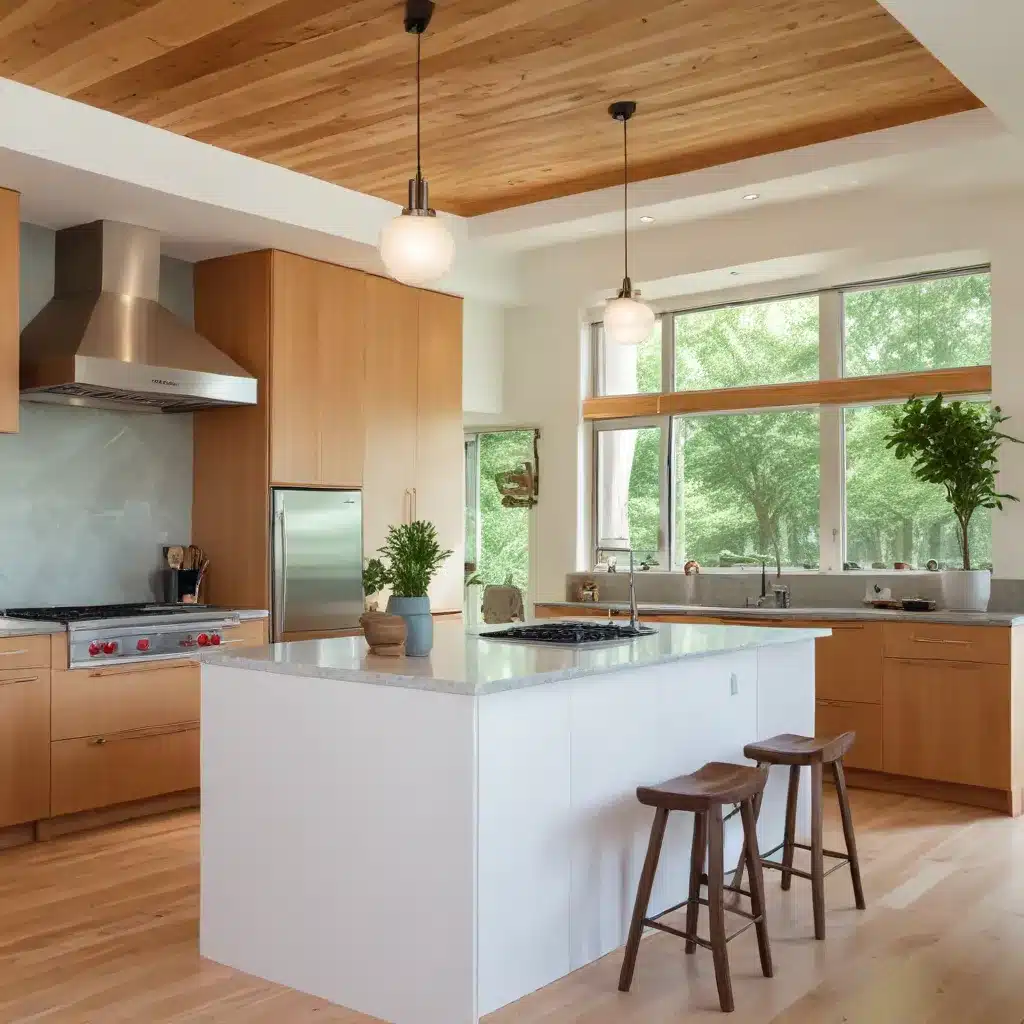
Sustainable Kitchen Remodeling: Reducing Environmental Footprint
As an experienced home improvement consultant on the Reluctant Renovator’s team, I’m thrilled to share my insights on sustainable kitchen remodeling. In today’s world, where environmental consciousness is paramount, transforming your kitchen into an eco-friendly haven has never been more important. By making thoughtful choices throughout the remodeling process, you can not only create a beautiful and functional space but also significantly reduce your home’s carbon footprint.
Materials and Resources
The foundation of a sustainable kitchen remodel lies in the selection of eco-friendly materials. From countertops to cabinets, every decision you make should prioritize sustainability and minimal environmental impact.
Eco-Friendly Material Selection
Opt for renewable resources such as bamboo, which is an incredibly durable and fast-growing material perfect for cabinetry and floors. Reclaimed or recycled wood also adds character while reducing waste. For countertops, consider materials like reconstituted stone, recycled glass, or even concrete made with recycled content.
Renewable and Recycled Materials
Incorporating renewable and recycled materials into your kitchen remodel is a surefire way to reduce your environmental footprint. Look for cork flooring, which is a sustainable option that provides excellent insulation and longevity. Recycled glass tiles or terrazzo made from recycled materials can add unique visual interest to your backsplash or countertops.
Waste Reduction and Disposal
During the remodeling process, be mindful of waste reduction. Work with your contractor to recycle or repurpose existing materials, such as cabinets or fixtures, whenever possible. This not only minimizes the amount of waste sent to landfills but also aligns with the principles of a circular economy.
Energy Efficiency
A crucial aspect of sustainable kitchen remodeling is improving energy efficiency. By investing in high-performance appliances and thoughtful design elements, you can significantly reduce your kitchen’s energy consumption and corresponding greenhouse gas emissions.
Appliance Selection
When choosing new kitchen appliances, prioritize models with ENERGY STAR certification. These appliances use significantly less energy than standard models, translating to lower utility bills and a smaller environmental impact. From refrigerators and ovens to dishwashers and microwaves, ENERGY STAR-rated options are the way to go.
Lighting Upgrades
Lighting plays a vital role in kitchen design, and sustainable remodeling offers excellent opportunities to enhance efficiency. LED light bulbs are a must, as they consume up to 80% less energy than traditional incandescent bulbs and last significantly longer. Strategically placing natural lighting sources, such as large windows or skylights, can also help reduce the need for artificial lighting.
Insulation and Ventilation
Ensuring proper insulation and efficient ventilation systems in your kitchen can make a big difference in energy usage. Well-insulated walls and ceilings help maintain a comfortable temperature, reducing the burden on your heating and cooling systems. Likewise, a high-performing exhaust fan can effectively remove heat, moisture, and cooking odors, enhancing indoor air quality and minimizing the need for energy-intensive cooling.
Water Conservation
Saving water is another crucial aspect of sustainable kitchen remodeling. By incorporating water-efficient fixtures and technologies, you can significantly reduce your kitchen’s water consumption while maintaining functionality and convenience.
Water-Efficient Fixtures
Low-flow faucets and water-saving dishwashers are excellent choices for reducing water usage in your kitchen. These fixtures and appliances are designed to deliver the same performance while using significantly less water, making them both eco-friendly and cost-effective in the long run.
Greywater Systems
Consider integrating a greywater system into your kitchen remodel. Greywater systems recycle used water from sinks, dishwashers, and even washing machines, allowing it to be repurposed for landscape irrigation or toilet flushing. This innovative approach can dramatically reduce your overall water consumption.
Rainwater Harvesting
Another water-saving strategy is to incorporate a rainwater harvesting system. By collecting and storing rainwater, you can use this precious resource for tasks like watering your kitchen garden or cleaning outdoor surfaces, reducing the demand on municipal water supplies.
Sustainable Design Principles
When planning your sustainable kitchen remodel, it’s essential to embrace design principles that align with environmental stewardship. From passive solar design to biophilic elements, these strategies can enhance the overall sustainability of your kitchen space.
Passive Solar Design
Incorporating passive solar design techniques, such as strategically placing windows and optimizing the layout to capture natural light and heat, can significantly reduce your kitchen’s energy demands. This approach minimizes the need for artificial lighting and temperature regulation, leading to substantial long-term energy savings.
Biophilic Design
Integrating biophilic design elements, which reconnect the built environment with nature, can also contribute to the sustainability of your kitchen. This might involve incorporating natural materials, like wood or stone, or adding live plants that purify the air and provide a soothing ambiance.
Circular Economy Concepts
When possible, aim to implement circular economy principles in your kitchen remodel. This means designing with longevity in mind, using modular or adaptable components, and choosing materials that can be easily repaired, repurposed, or recycled at the end of their useful life. By embracing this mindset, you can help reduce waste and resource depletion.
Sustainable kitchen remodeling is a multi-faceted endeavor that requires careful planning and a commitment to eco-friendly practices. By thoughtfully selecting materials, improving energy efficiency, conserving water, and embracing sustainable design principles, you can transform your kitchen into a haven that not only looks beautiful but also minimizes its environmental impact.
To get started on your sustainable kitchen remodel, I recommend visiting Reluctant Renovator for more inspiration and practical tips from experienced home improvement professionals like myself. Together, we can create a kitchen that serves as a shining example of environmental stewardship and responsible living.



